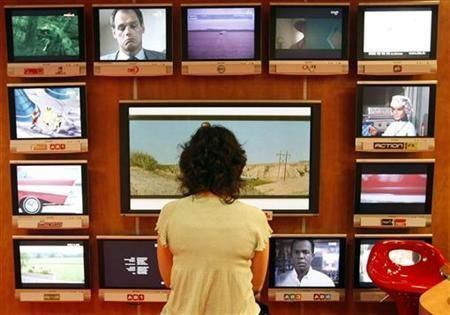Broadcast vs. Cable Reach: As Skinny Bundles Proliferate, Some Networks Won’t Survive

If and when the cable bundle finally goes extinct, which channels will go extinct with it? And which ones will survive? Those are two big unknowns as the television industry moves toward an a la carte ecosphere, but the research firm MoffettNathanson got us closer to an answer this week, releasing new statistics that show what percentage of viewers individual broadcast and cable networks actually reach.
Analyzing two years of data from Nielsen Media, the firm revealed what it called the “absolute strength” of each network, a measurement that might help determine which networks will be expendable and which will be considered “must-haves” as consumers gravitate toward skinnier bundles like the ones now offered by Sony’s PlayStation Vue and Dish Network’s Sling TV.
As it turns out, broadcast TV is still king. The Big Four broadcasters (ABC, CBS, NBC and Fox) reached a weekly average of 40 percent of all viewers in 2014 -- seven times what the typical cable network reaches, according to Michael Nathanson, MoffettNathanson’s senior analyst. To put that number in perspective, the top-rated cable network, USA Network, had an average weekly reach of 16.9 percent of viewers, and a mid-range cable networks like Comedy Central and Lifetime reached just over 10 percent.
Given the wide disparity, Nathanson concluded that Web-TV providers would be “foolish” not to include the feeds of major broadcasters with any new over-the-top bundle.
But not everyone is heeding that warning. Sony’s Vue debuted in three cities this month with an extensive 80-channel package, but no ABC. And Dish Network’s Sling TV launched in January with a basic package of just 12 cable networks. Going after younger cord-cutters, Dish unapologetically offers none of the Big Four.
Nathanson said that omission will relegate the service to a niche market. “While we understand why Dish assembled this package lineup, the absence of the broadcast networks really limits the underlying ‘reach’ potential of the offerings,” he said in a research note Wednesday. “We don’t believe this service offers enough to attract a sizable customer base.”
New Delivery Methods, Same Old Problems
Of course, one of the reasons Dish went with a broadcast-less bundle is money. Pay-TV providers like Comcast Corp. and Time Warner Cable Inc. shell out hefty retransmission consent fees for the privilege of carrying local broadcast affiliates, and those fees are getting heftier every day. They’re expected to hit $9.3 billion by 2020, more than twice what they were in 2014, as Multichannel News reported.
What’s more, as Nathanson points out, three out of four major broadcast networks are owned by large media conglomerates, each with their own family of cable networks. That means if over-the-top providers wants to offer ABC, which is owned by the Walt Disney Company, they may also be forced to take Disney-owned channels with lesser reach, like ESPN2 or Disney Junior. These types of bundled negotiations can be contentious -- they are often what lead to carriage disputes and blackouts in the traditional cable ecosphere.
It’s unclear if younger consumers -- many of whom have never had a cable subscription -- will miss the broadcast networks. The median age of a broadcast viewer is now almost 54 years old, as the Washington Post reported in September. That’s up 7 percent from four years ago and almost 10 years older than the average cable viewer.
Winners And Losers
Last year was a challenging one for television, with viewership down across the board. MoffettNathanson’s research shows some channels saw their reach decline as well, a hint into which channels may have more difficulty securing carriage on over-the-top services. Al Jazeera America took one of the biggest hits, losing 32 percent of its reach in 2014. TruTV, CNN, FX and the History Channel all saw losses in the double digits. On the flip side, CNBC, Disney Junior and IFC TV all saw double-digit gains.
Even as some networks -- notably CBS and HBO -- are readying standalone services, Nathanson said we will likely not see a truly unbundled, al la carte service anytime soon, as such a service would force media companies to seek larger affiliate fees for individual networks beyond what consumers would be willing to pay. Consider ESPN, which has the largest audience on cable and also demands the highest affiliate fees. Right now, pay-TV providers pay about $6 per subscriber to carry the sports juggernaut, a price sometimes dubbed the “sports tax.” But if ESPN were to go direct-to-consumer, it would have to collect more than $35 per household just to break even, according to Nathanson.
“Our takeaway here is pretty straightforward,” Nathanson wrote. “The interest and economics of the industry make a la carte a virtually impossible task.”
Christopher Zara is a senior writer who covers media and culture. News tips? Email me here. Follow me on Twitter @christopherzara.
© Copyright IBTimes 2024. All rights reserved.






















